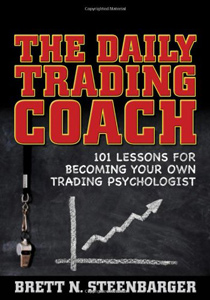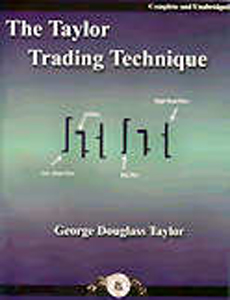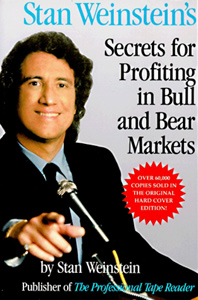How to Trade Crude Oil
When we fly, when we drive home, when we turn on the lights and when we try and keep warm, we are using one of the sought-after commodities in the world, that is crude oil. Hi, I'm James and I like you to join me as we discover trading.
Today we are looking at crude oil, a commodity we all use in our day to day lives and is often a headliner in the news, in particular, we will focus on WTI oil with the hope that by the end of this video you will know what to look for if you are looking to become an oil trader.
Trading Crude Oil
First things first, where does oil come from? Crude oil is also called FOSSIL FUEL which many scientist believed to be transformed from the remains of plants, tiny million organisms and large animals like the dinosaur which mixes with mud and sand and ferments over millions of years and becomes the very substance that drives our world. WTI which stands for West Texas Intermediate is a grade of crude oil which is described as light and sweet and it is a physical commodity. It tends to be news worthy because it is used as a bench mark for oil prices. Crude oil can present a lot of potential trading opportunities due to its high liquidity and its unique position in today's global, economic and political arena. So, what are some of the key areas you need to be aware of when you are looking to trade this commodity?
First and foremost is SUPPLY and DEMAND.
As long as demand is exceeding supply, the value of oil tends to do well. When supply exceed demand, we tend to see the opposite effect. For example, in the summer of 2008 WTI started its run towards a $150 a barrel due to a fall of supply and high in demand. When the global economy crashed into recession, demand dropped while its supply remained consistent.
In less than a year, prices had fallen while by more than 50%. How can you monitor supply when nothing is ever certain but one way to keep an eye on supply is through the EIA crude oil stockpiles which is released once a week and shows the number of barrels in stock? Details of this can be find on the financial calendar. MyShareTrading.com
Another major area to watch out for is OPEC and its meetings. OPEC is the Organization of Petroleum Exporting Countries and it's an inter-government organization of 13 oil producing nations including the likes of Saudi Arabia and Kuwait. This organization accounts for estimated 42% of global oil production, so its decisions on oil supply levels tend to have a major influence on global oil prices. It’s also a good idea to be mindful of potential conflict or political unrest occurring in oil producing nations as this can have an impact on supply. When it comes to potential future demands it can command such an economic instigators which includes the following;
- GLOBAL GDP - Higher growth can correct more demands.
- Industrial Production and Manufacturing Production - A growth in industry can result in more demand for oil.
- Market Sentiment - This is another strong indicator as we all know with all kinds of trading. Knowing the word in the market in bullish or bearish can be an indicator of potential effect it could have on WTI. Our very own insider viewer can be used to help with sentiments.
So, in final analysis, these are the areas you need to be aware of when you are looking to trade WTI oil.
- Supply and Demand
- US EIA Crude Oil Stockpile
- OPEC decisions on Supply
- Potential conflict or political Unrest
- Global GDP/Industrial Production growth
- Market Sentiments.
Join me next time when we start to look at the psychology of trading. Till then, thanks for watching and YOU TRADE SAFE! Start Trading Oil Today!
- How to Trade Forex and Gold Options
- How to Trade the Gold Price and Profit!
- Forex Trading the EUR/USD Pair € EURO and $ US Dollar
- How to Trade Stock Market Indices S&P500
- How to Trade Crude Oil
- Forex Trading Psychology
- What Are Broker Recommendations?
- Free Tickets to Trading & Investing Seminar & Expo ($18) Brisbane 2013
- Stock Calc App
- All About Warrants
- Introduction to Exchange Traded Funds
- Introduction to Exchange Traded Funds: Features
- Introduction to Exchange Traded Funds: Domestic ETFs
- Introduction to Exchange Traded Funds: International ETFs
- Exchange Traded Commodities
- Australian Stock Scan
- Australian Online Share Trading
- List of Trading Books
- Interesting Thoughts about the Australian Dollar
- What's the Meaning of Hawkish?
- Do You Know How To Use the P/E Ratio
- Trading, Religion and Politics - Do They Have Anything in Common?
- Shares that are Volatile that Double and Half in the Short Term
- Telstra (TLS) T3
- Margin Call by E-mail
- The Cost of Holding a Position
- Lack of Disclosure: Compensation from ASX Listed Company
- Unrealistic Returns and Benchmarks
- CMC Markets Down
- Quality versus Quantity Forex Trading
- Woolworths 1H Sales $30.7bn up 3.2%
Date added 31-01-2013 - ASIC Fines CommBank's CommSec
Date added 25-09-2012 - Industry Super Network Calls to Ban High Frequency Trading (HFT)
Date added 22-09-2012 - NAB Launches Online Share Trading Platform
Date added 19-09-2012 - Reserve Bank of Australia Says 23 Countries Holding AUD
Date added 18-09-2012 - Australia Post Digital Mailbox
Date added 10-09-2012 - Winners and Losers of Trading for Week 2
Date added 16-01-2012 - 2012's First Week of the Best and Worst Traded Stocks
Date added 09-01-2012 - 2011's Last Best and Worst Traded Stocks
Date added 05-01-2012 - Best and Worst Pre-Christmas Traded Stocks
Date added 30-12-2011 - Trading Winners and Losers for Dec. 12-16
Date added 19-12-2011 - Best and Worst Traded Stocks for Dec. 5-9
Date added 13-12-2011 - Top 3 Best and Worst Traded Stocks
Date added 05-12-2011 - ASX Glitch Trading Halt
Date added 27-10-2011 - Worst Trade Stocks (and the Best)
Date added 06-08-2011
Top 150 Public Companies Listed on the Australian Stockmarket as at 29/05/2009
- BHP Billiton
- Westpac Banking Corporation (WBC)
- Commonwealth Bank of Australia (CBA)
- National Australia Bank (NAB)
- Telstra (TLS)
- ANZ
- News Corporation (NWS)
- Woolworths Limited(WOW)
- Woodside Petroleum Limited (WPL)
- Rio Tinto
- Westfield Group (WDC)
- Westfarmers Limited (WES)
- QBE Insurance
- CSL
- Newcrest Mining Limited (NCM)
- Origin Energy Limited (ORG)
- Santos Limited (STO)
- AMP Limited (AMP)
- Macquarie Group (MQG)
- Foster’s Group Limited (FGL)




